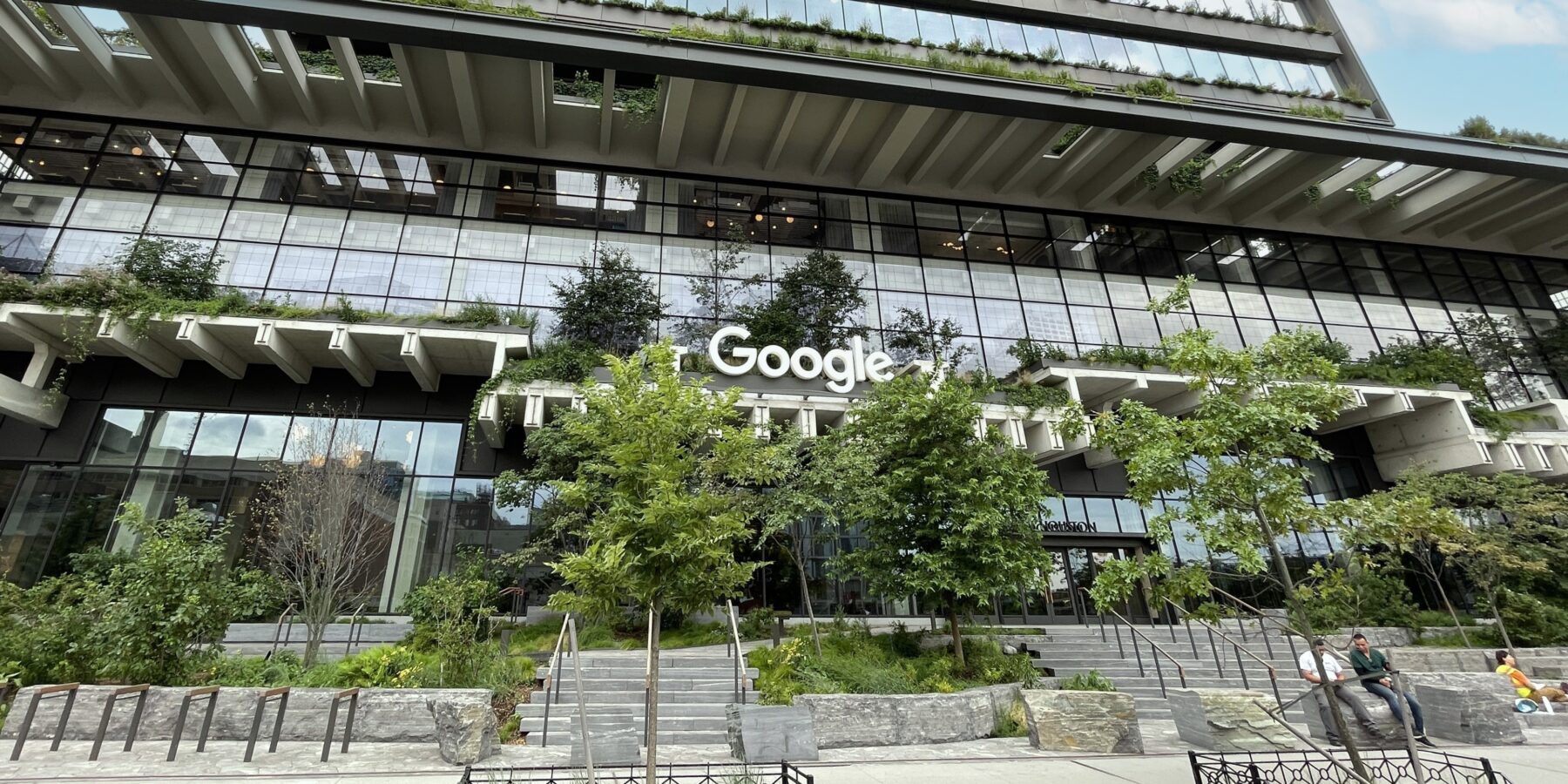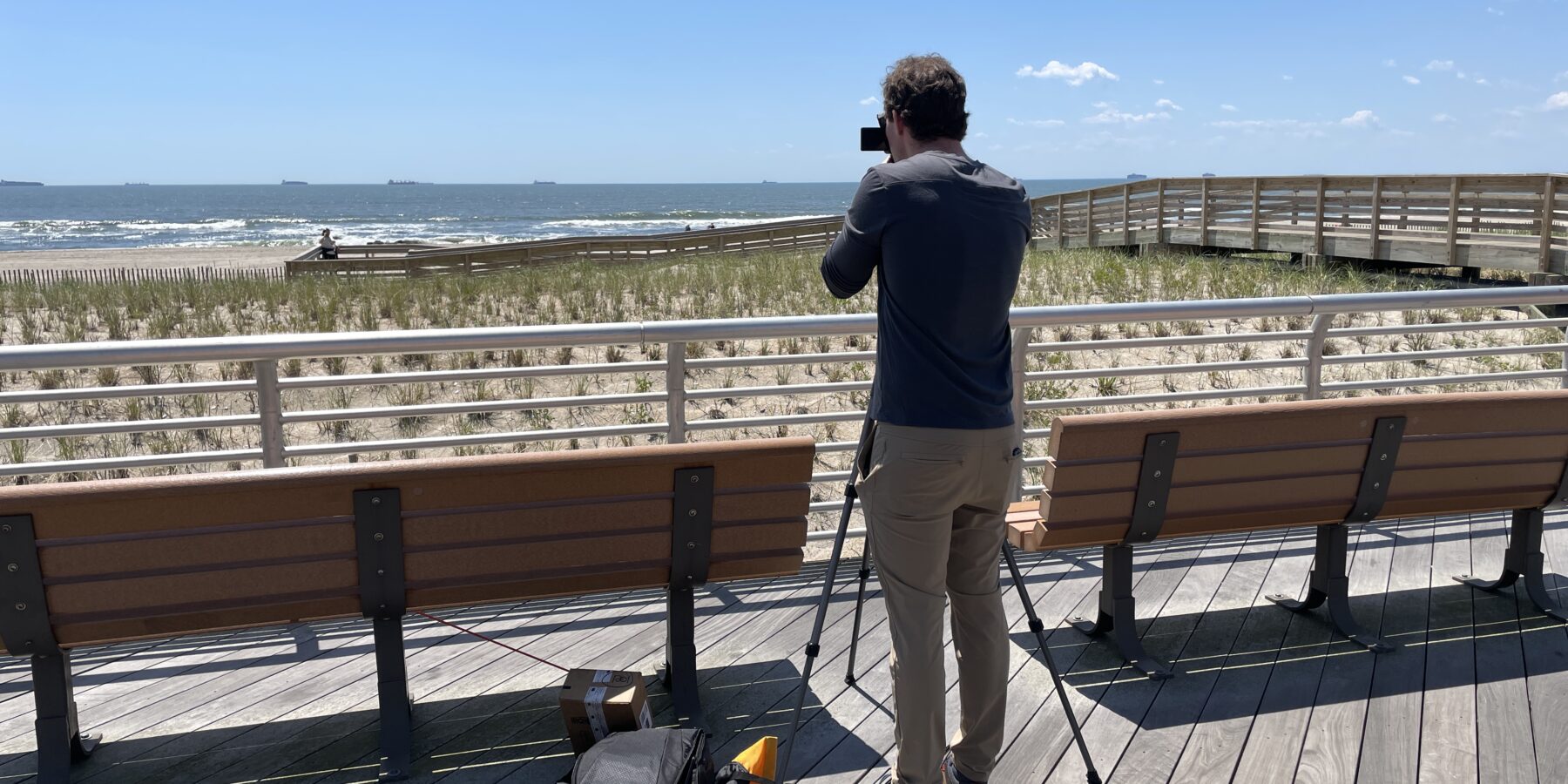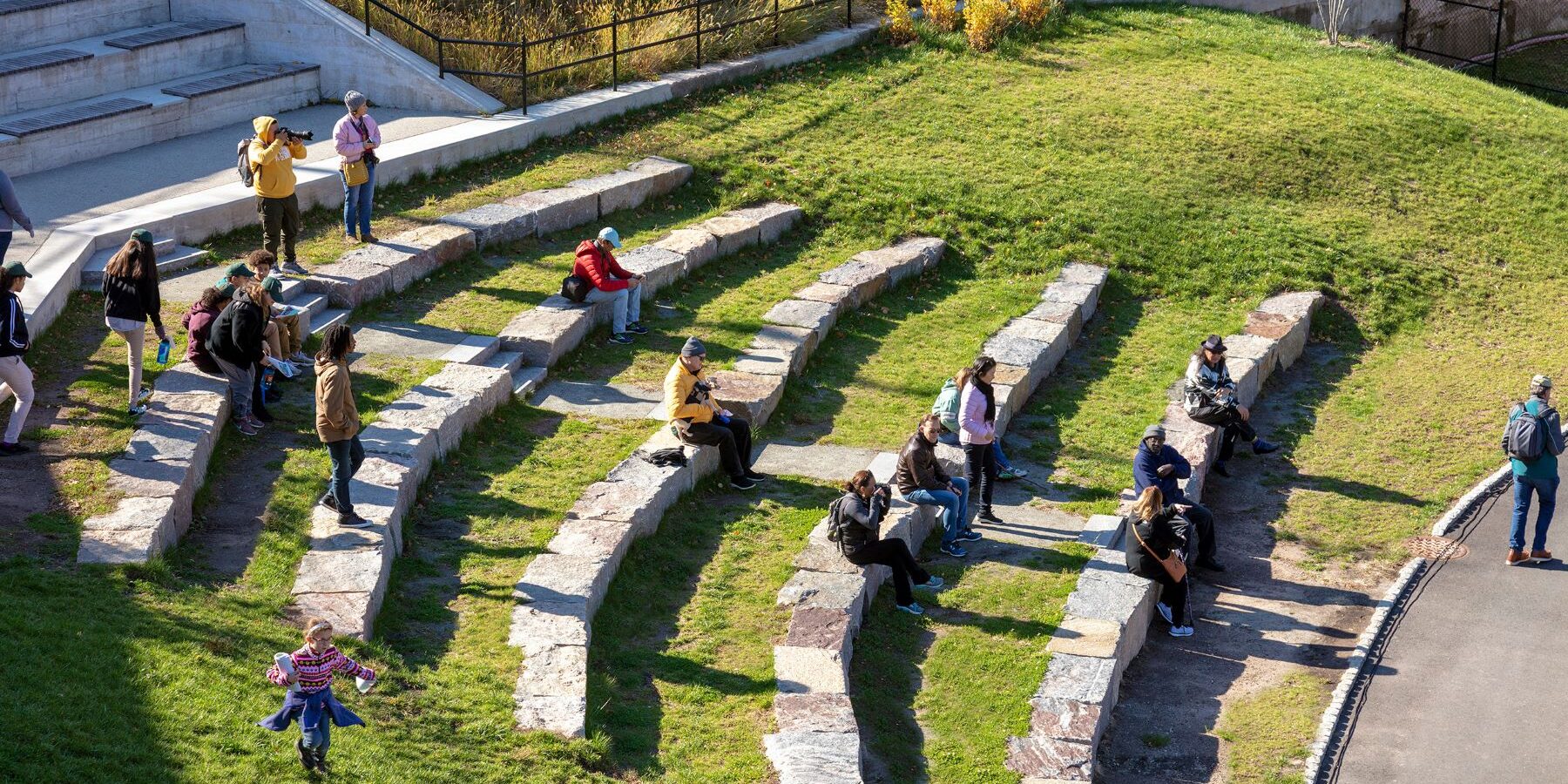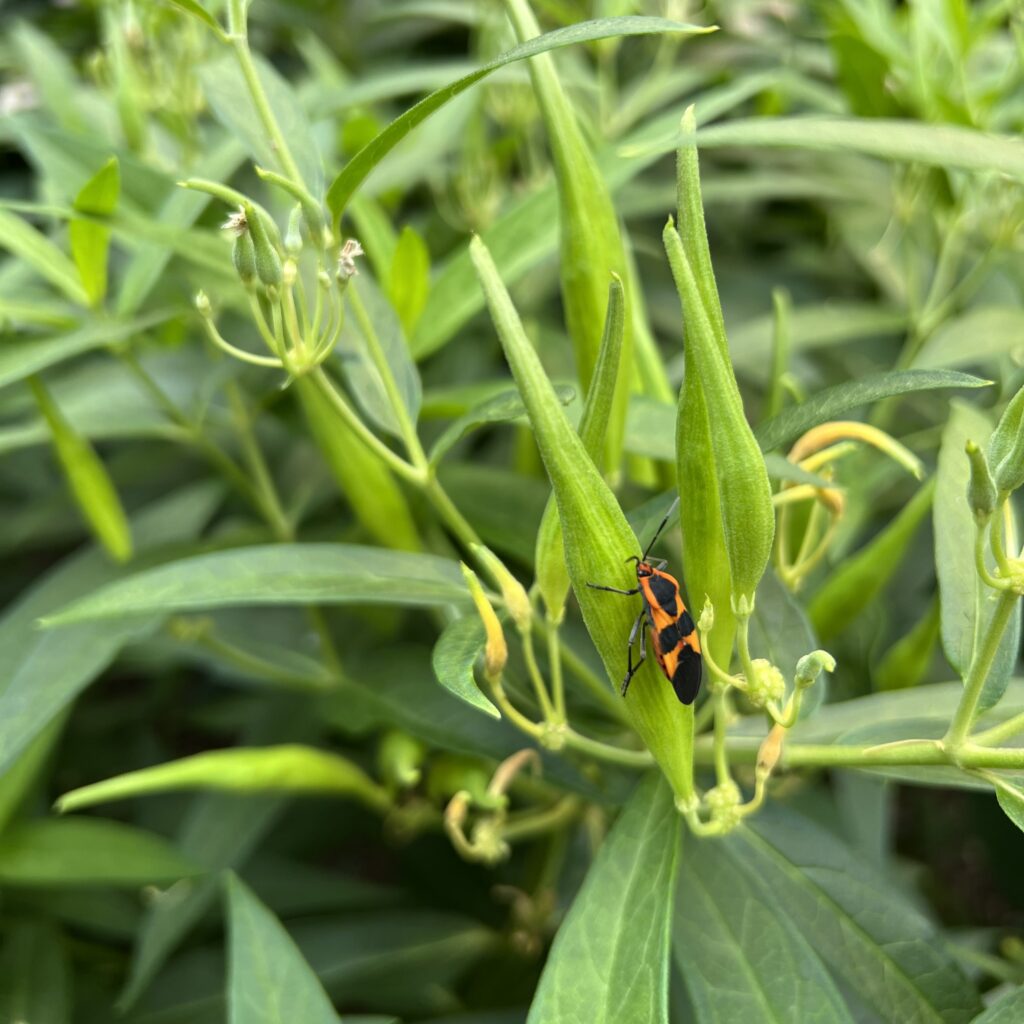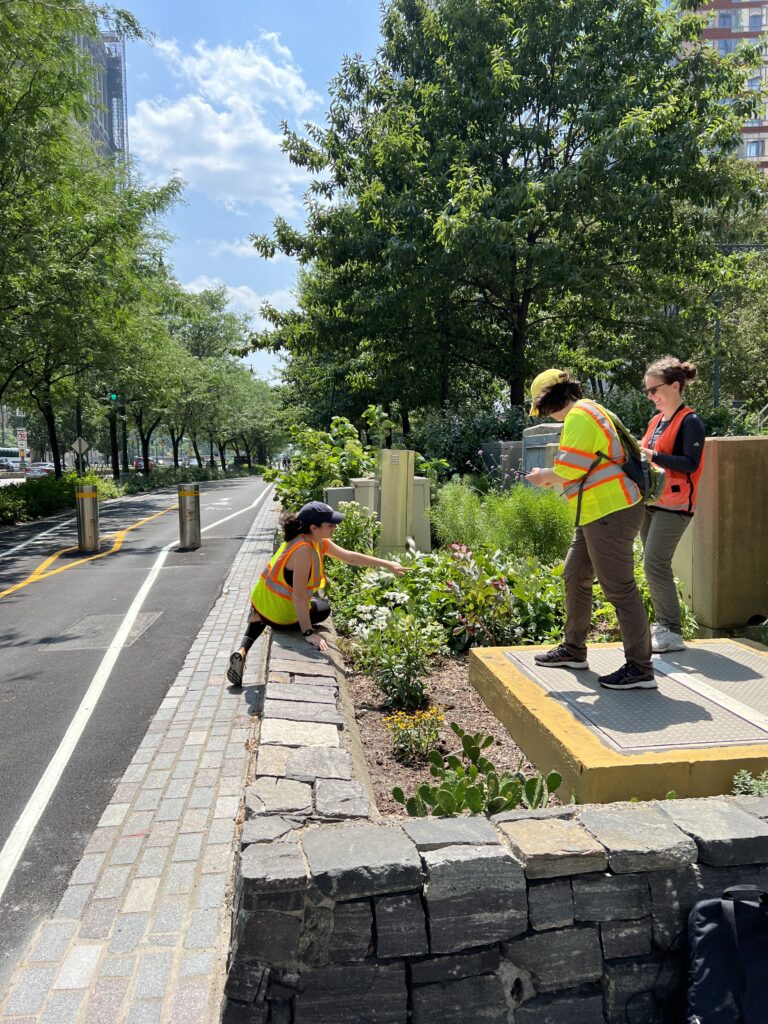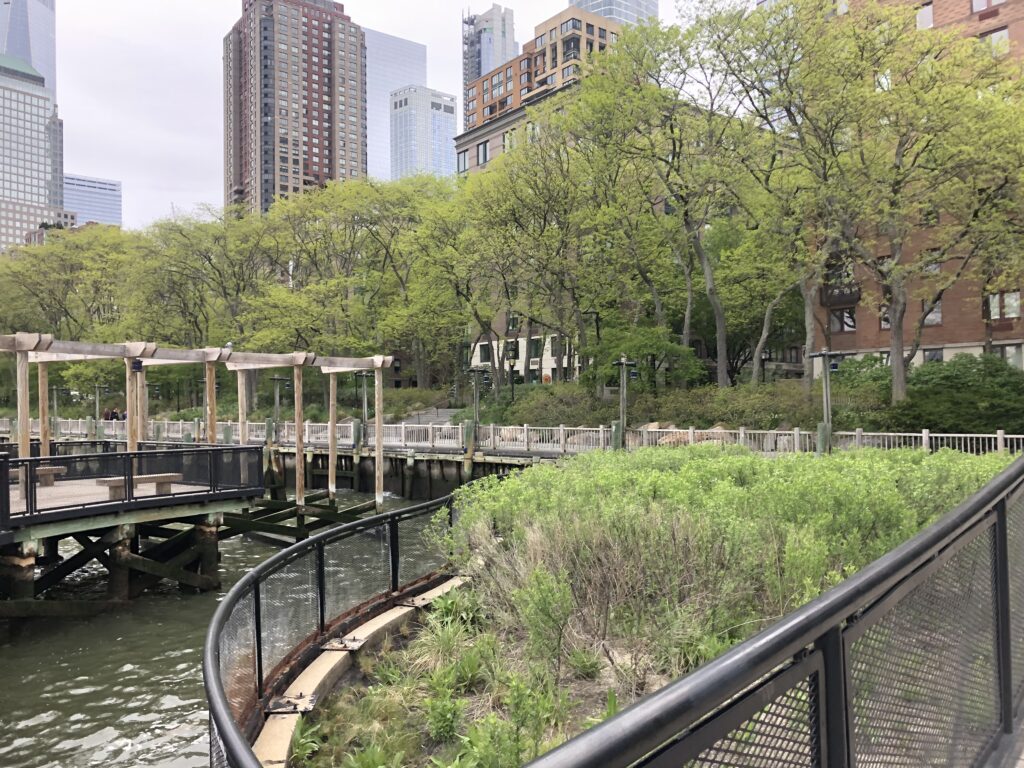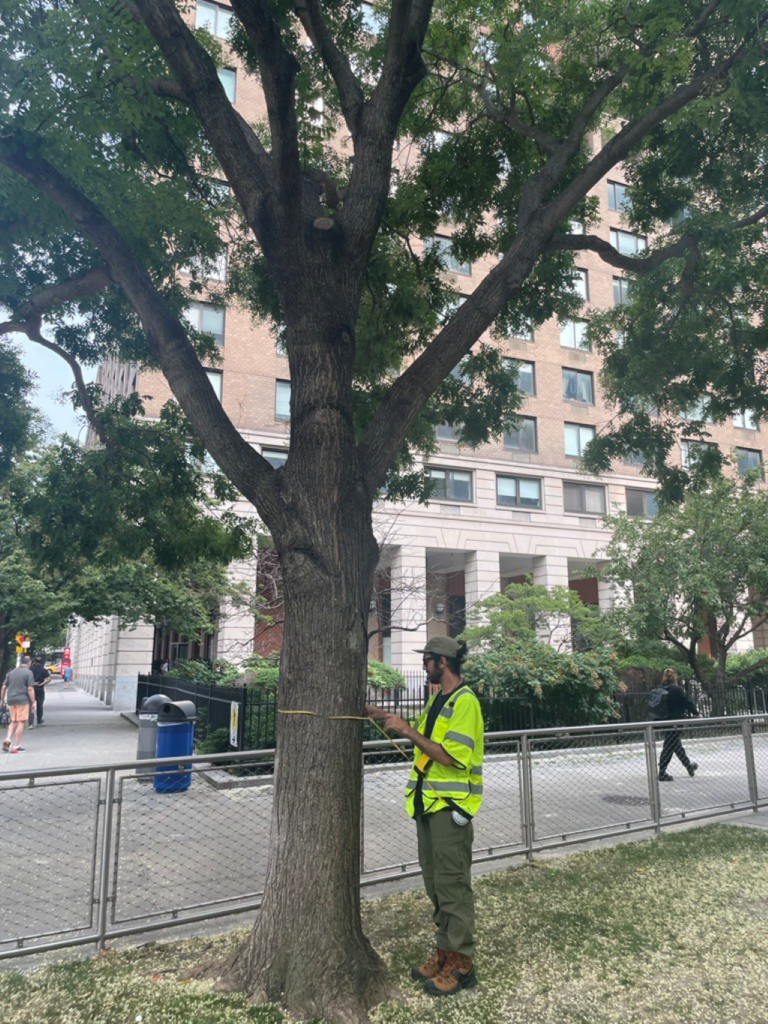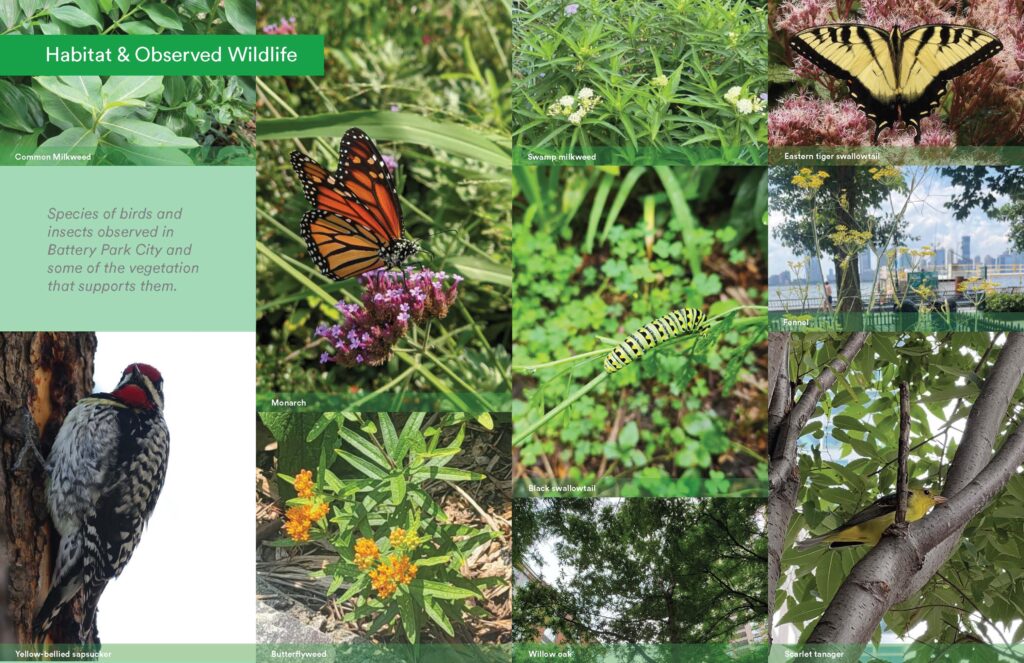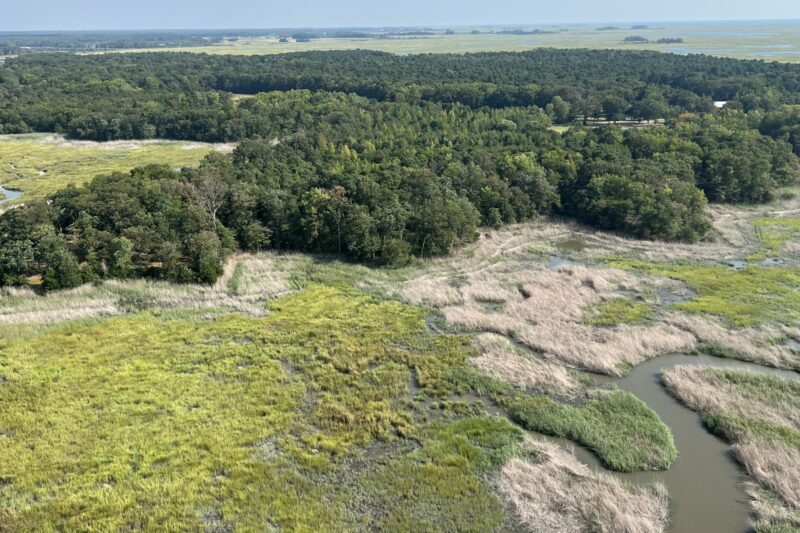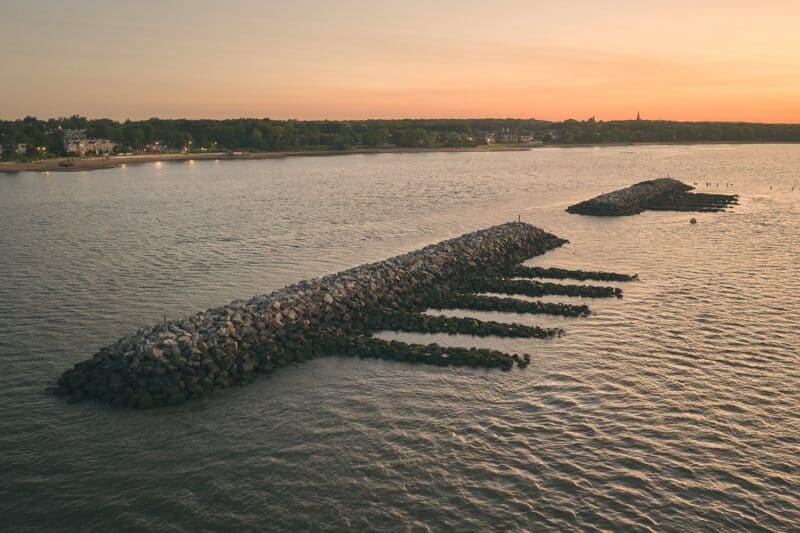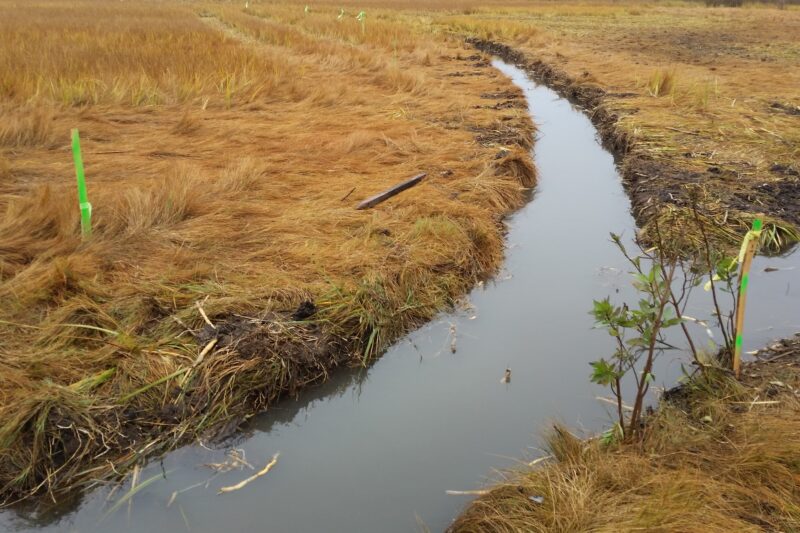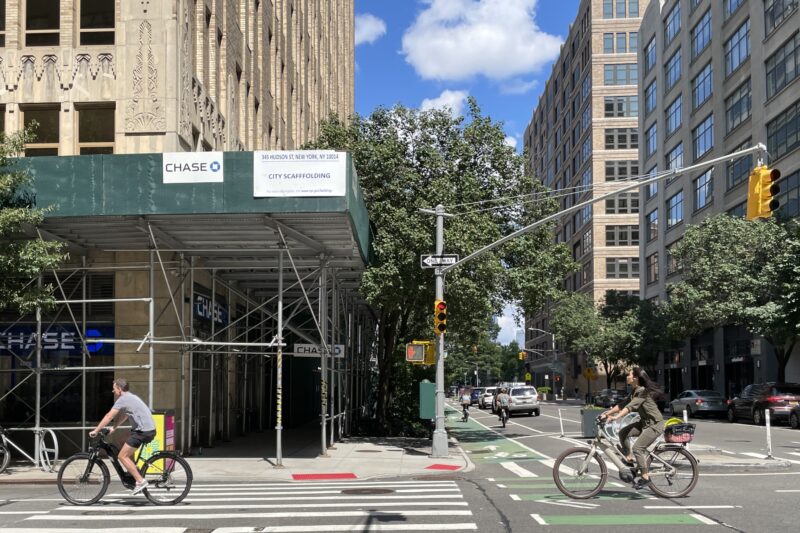Biodiversity and Resiliency: From Ground to Crown
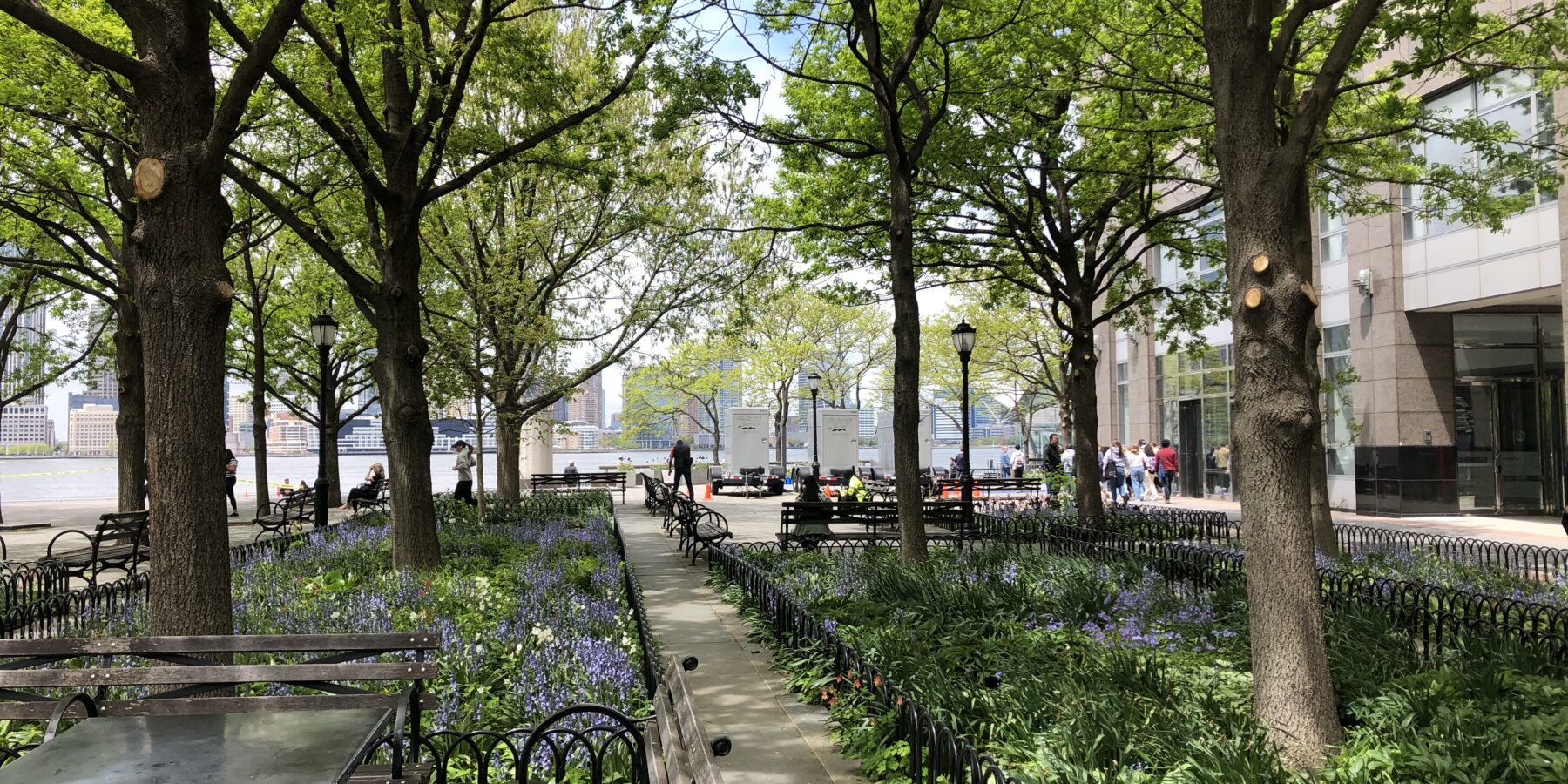
Battery Park City is a 96-acre waterfront community in Lower Manhattan—including 36 acres of parks and public space.
Published in April 2024, the Battery Park City Authority’s 2023 Urban Tree Canopy & Biodiversity Data Audit and Recommendations Executive Summary describes the results of a study prepared by Buro Happold, SCAPE, and AKRF pertaining to biodiversity, wildlife habitat, resiliency, thermal comfort, and tree management in Battery Park City.
This study supports two goals of the Battery Park City Sustainability Plan and will help the BPCA plan for climate resilience and adaptation and enhance the wildlife habitat throughout the neighborhood. Our work involved a neighborhood-wide plant species inventory in maintained garden beds and a root-to-crown inventory and examination of approximately 1,800 trees. AKRF addressed several essential challenges during the project.
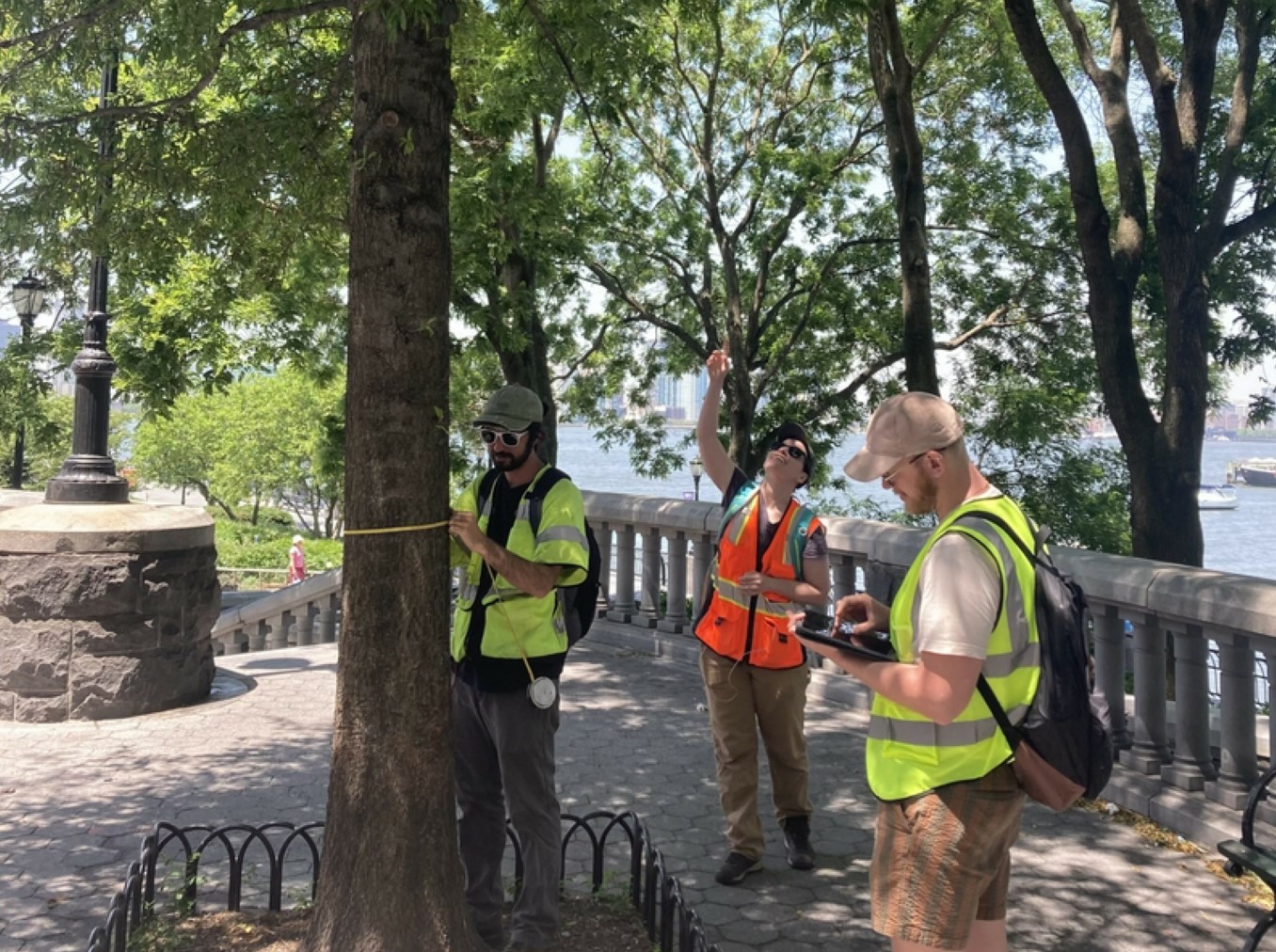
Balancing Data and Analytical Needs
BPCA has a team of gardeners and tree care workers for the parkland trees and a private contractor for the street trees.
Our team seamlessly paired the biodiversity and tree inventories to provide a collective snapshot of existing conditions with respect to biodiversity, habitat value, and resiliency while ensuring the inventories of trees and garden beds could be isolated from one another when necessary.
The program we built also needed to be replicable for BPCA’s daily use by gardeners and tree care workers and for future plant and tree inventories conducted by BPCA or others.
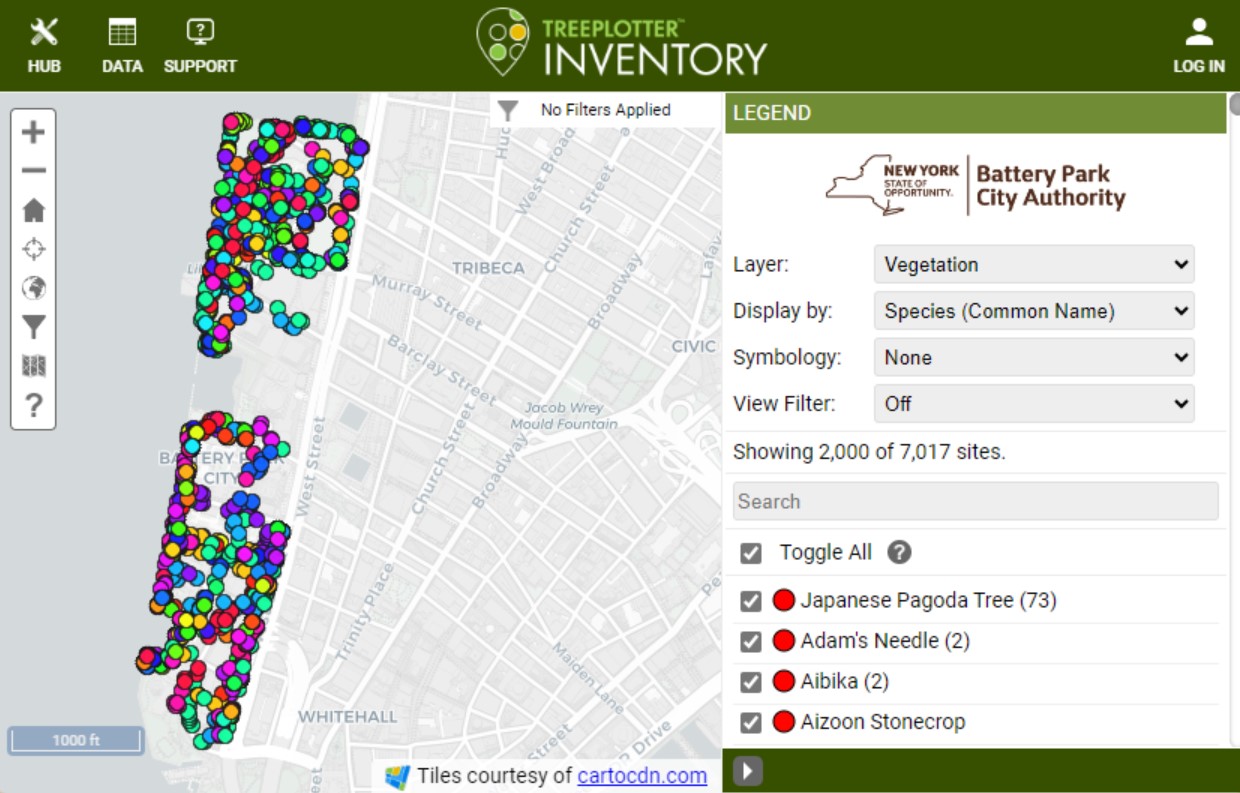
Selecting the Right Software
After a precedent study audit by AKRF showed similar programs utilized by parks, municipalities, universities, and non-for-profits wouldn’t meet the Authority’s needs in full, we built a customized program for BPCA along with a data analysis tool.
To ensure all the data could be analyzed together while also used as two separate data sets, BPCA and the consultant team chose the TreePlotter application for its flexibility in allowing both tree care workers and gardeners to document and update their respective information and generate work orders for future care.
Developing Custom Protocols for Maintained Parks
Our research showed that most biodiversity studies are conducted in urban parks that contain natural habitats such as forests, fields, shrublands, and wetlands—but no other programs had conducted biodiversity surveys in parks that are fully maintained.
AKRF developed the plant and tree species protocols for BPCA’s program based largely on industry standards and methodologies geared to natural areas but customized for a maintained natural environment. These protocols work in a complementary manner such that tree inventory data could be incorporated into the broader plant species inventory.
Studying Biodiversity and Resiliency Together
We worked with BPCA to identify the desired metrics and analyzed the data across the full inventory of plant and tree species both inland and along the waterfront. Where some parameters, such as saltwater inundation tolerance, are still not widely known, additional studies will be conducted in the future to understand gaps in the data.
We also integrated the data shared by park users on iNaturalist, an online social network for anyone who wants to record biodiversity observations and share and discuss them with fellow naturalists and enthusiasts. This effort complemented the overall program of client and stakeholder engagement encompassing meetings, workshops, public demonstrations, and presentations.
What’s Next for Battery Park City?
AKRF learned a lot about building a biodiversity program with an integrated tree inventory in maintained urban parks. We anticipate more information on plant characteristics will become available such that the BPCA’s database may be updated periodically, and the analyses rerun to gain a better understanding of the biodiversity, wildlife value, and resiliency of Battery Park City.
